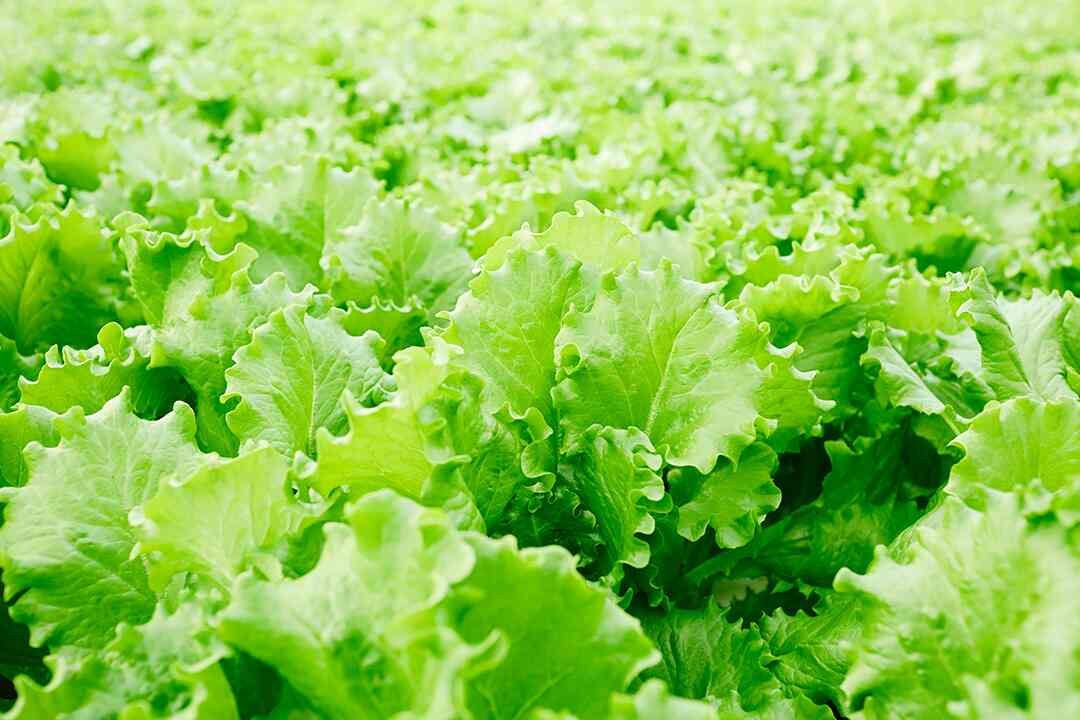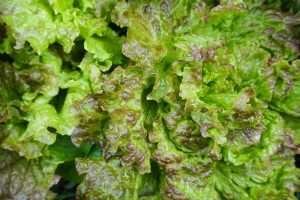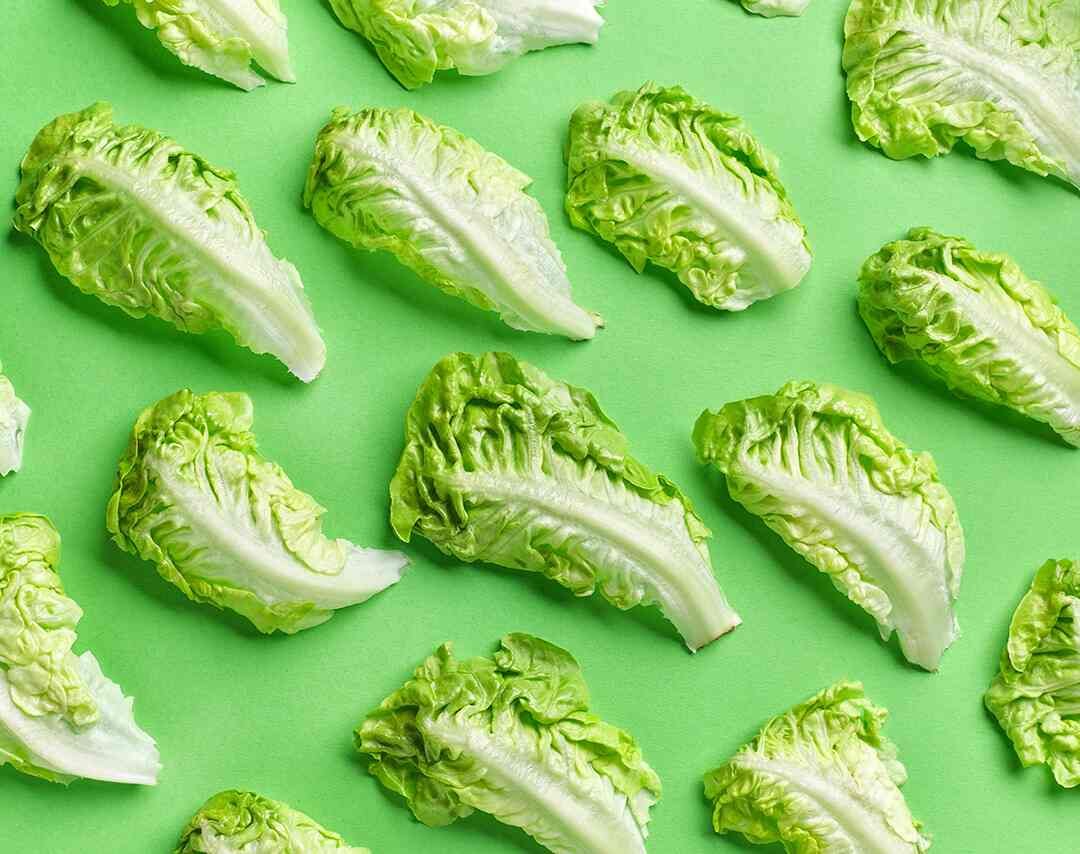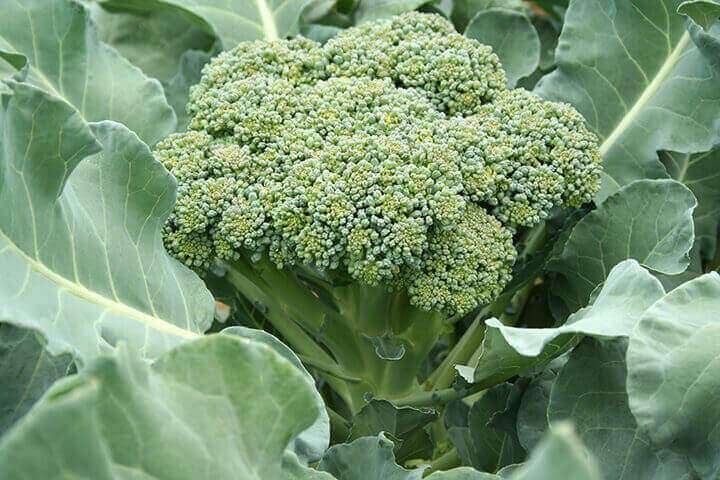Horses can eat lettuce in moderation. Horses adore fresh produce but for us, it can be challenging to determine which kinds to feed our horses and which ones to avoid. We understand your excitement about this tasty vegetable for your cherished animal. So, can horses eat lettuce? In this article, we will discuss whether lettuce is safe to feed or not, its important characteristics as well as how a horse should be fed this vegetable.
Can Horses Eat Lettuce?
 While lettuce can be fed to horses as a healthy vegetable it does not contain a significant amount of nutrients and vitamins. Therefore, relying solely on lettuce as a source of nutrition would not meet all of your horse’s dietary needs. However, there are some positive aspects to consider.
While lettuce can be fed to horses as a healthy vegetable it does not contain a significant amount of nutrients and vitamins. Therefore, relying solely on lettuce as a source of nutrition would not meet all of your horse’s dietary needs. However, there are some positive aspects to consider.
- Lettuce has a fresh flavor and texture that many animals including horses find appealing.
- It is also low in calories.
- Lettuce can be a good source of hydration for horses, particularly on hot summer days, as they may drink a substantial amount of water from it.
- Lettuce is easily digestible, so there is no need to worry about potential stomach pain.
- Its wide availability and reasonably priced make it convenient for feeding other animals on the farm as well.
Is Lettuce Good For Horses To Eat?
The answer is yes! Lettuce is one of the few vegetables that horses can consume without any negative effects. It’s a healthy and safe diet horses can take. Horses not only enjoy this variety in nutrition, but also appreciate the satisfying crunch and juiciness of lettuce. You can treat your horse with lettuce without worrying about any risks. Moreover, lettuce is easily accessible and affordable, so you won’t have any trouble finding a tasty snack that’s good for your horse.
Things To Keep an Eye On
Feeling confident about feeding lettuce to your horse? Great! You can offer it to your horse directly or add it to their regular feed. It’s acceptable for your horse to consume a significant amount of lettuce, but there are some guidelines you should keep in mind. By following these recommendations, you can safely add lettuce into your horse’s diet and provide them with an enjoyable treat while maintaining their overall nutrition.
 First, remember that lettuce should not be the main source of food for your horse. It’s important to provide a balanced diet with the right amount of nutrients. If your horse already has a healthy diet, you can give them more than two pounds of lettuce per day as a treat.
First, remember that lettuce should not be the main source of food for your horse. It’s important to provide a balanced diet with the right amount of nutrients. If your horse already has a healthy diet, you can give them more than two pounds of lettuce per day as a treat.
When feeding lettuce, ensure it is cooled down or dried out if it has been stored in the refrigerator. Damp leaves can lead to bloating, so it’s essential to prevent any discomfort or digestive issues. Additionally, never feed your horse slimy or wilted leaves to ensure their safety.
Can We Give Horses Iceberg Lettuce?
Iceberg lettuce has fewer nutritional benefits than other types of lettuce and may not be good for all animals. Therefore, if you offer this vegetable to your horse after storing it in the refrigerator, it could upset its digestive system.
Is Lettuce Considered A Healthy Snack?
Lettuce is a tasty and healthy treat for your horse for several reasons, the first of which is the amount of water it contains. Essentially, this leafy vegetable is composed of 96% water. In light of this, a pound or two of lettuce will help your pony replenish some major fluids, especially during those long, hot summer days. This implies that any horse that consumes lettuce will instantly feel cooler and more energized as a result of the water boost. The fact that lettuce has a very low calorie and sugar content is another fantastic quality.
As a result, you won’t have to worry about feeding it to a horse that is overweight or has metabolic issues like insulin resistance. If you have to pick between feeding your priceless horse a lot of lettuce or apples or other sugary fruits and vegetables, even with healthy horses, you should always select the lettuce. By making this decision, you’ll guarantee that you stay away from things like probable weight gain, and blood sugar increases.
Since lettuce is primarily composed of water, it has the advantage of being digestible. As a result, it encourages regular bowel movements, which lowers the risk of experiencing stomachaches and other digestive problems.
Certain vitamins and minerals, including Potassium, Calcium, iron, Folates, Vitamin A, Vitamin K, and Vitamin C, are present in lettuce. However, it is deficient in several other vital elements that your horse needs to be wholesome and robust. For instance, lettuce neither has lipids nor proteins and contains a very small amount of sugar. With such makeup, your horse won’t have the energy to keep going throughout the day and will eventually develop several nutritional deficiencies and related ailments including anemia. Therefore, lettuce should never serve as the sole source of nutrition but rather just as a supplement. You can guarantee your horse’s well-being and happiness as long as you keep it in mind.
Nutrition in Lettuce for Horses
| Nutrient | Amount per 100g of Lettuce |
|---|---|
| Calories | 15 |
| Protein | 1.4 g |
| Fat | 0.2 g |
| Carbohydrates | 2.9 g |
| Fiber | 1.3 g |
| Calcium | 36 mg |
| Phosphorus | 29 mg |
| Potassium | 194 mg |
| Magnesium | 13 mg |
| Vitamin A | 740 IU |
| Vitamin C | 4 mg |
| Vitamin K | 62.5 mcg |
| Iron | 0.6 mg |
| Zinc | 0.2 mg |
Note: These values may vary slightly depending on the type of lettuce and the specific growing conditions.
As you can see, lettuce is relatively low in calories and protein compared to other feed sources for horses. However, it is a good source of vitamins and minerals, particularly vitamin A and potassium. While lettuce can provide some additional fiber in a horse’s diet, it should only be fed in small amounts as a treat or supplement, and should never be the primary source of nutrition.
Precautions
Only a couple of things:
When it comes to safety, lettuce rates as one of the best vegetables a horse can eat. Furthermore, lettuce can be a little difficult to digest in large amounts due to its low fiber content. So once more, for the benefit of your horse, don’t overdo it with the portion amounts. The freshness of the lettuce leaves is something else to consider.
 Never feed your horse any leaves that are slimy, withered, smelly, and upset stomach. Any moldy leaf can ferment in the animal’s stomach, causing gas and perhaps colic. Likewise, make an effort to thoroughly wash the lettuce leaves. This gets rid of any remaining toxins and dirt particles that could upset your stomach. Take your time drying the leaves as well to prevent problems like bloating and diarrhea from being brought on by the extra water. Lastly, you must watch out for your baby if there are wild or spiky lettuce plants growing in your horse’s paddock. These bitter lettuce types include compounds termed Lactucin[1], Lactucopicrin[2], and Lactucarium[3] that, when consumed, can upset the stomach. Since they may impact the central nervous system and have sedative and narcotic effects as a result. To exhibit any evidence of nervous system attachment, your horse must consume an excessively big amount of food, which is unusual for grazing horses. To soothe your mind and your horse’s stomach, it is recommended to keep your horse away from this sort. Therefore, gather any leaves you come across in the pasture and keep them far away from your beloved horse.
Never feed your horse any leaves that are slimy, withered, smelly, and upset stomach. Any moldy leaf can ferment in the animal’s stomach, causing gas and perhaps colic. Likewise, make an effort to thoroughly wash the lettuce leaves. This gets rid of any remaining toxins and dirt particles that could upset your stomach. Take your time drying the leaves as well to prevent problems like bloating and diarrhea from being brought on by the extra water. Lastly, you must watch out for your baby if there are wild or spiky lettuce plants growing in your horse’s paddock. These bitter lettuce types include compounds termed Lactucin[1], Lactucopicrin[2], and Lactucarium[3] that, when consumed, can upset the stomach. Since they may impact the central nervous system and have sedative and narcotic effects as a result. To exhibit any evidence of nervous system attachment, your horse must consume an excessively big amount of food, which is unusual for grazing horses. To soothe your mind and your horse’s stomach, it is recommended to keep your horse away from this sort. Therefore, gather any leaves you come across in the pasture and keep them far away from your beloved horse.
Ways of Serving Horse Lettuce
Fortunately, it’s not too difficult to prepare lettuce for your darling pony. Just take a head of lettuce and divide the leaves. After that, take out any wilted leaves, wash the remaining leaves for a  few minutes under running water, and dry them well. It’s now as simple as laying a flat lettuce leaf on your hand to give your horse the treat. The lettuce leaves can also be added to a horse’s normal diet. Just remember not to ever empty an entire head of lettuce into your horse’s stall; we’ll tell you why in a moment.
few minutes under running water, and dry them well. It’s now as simple as laying a flat lettuce leaf on your hand to give your horse the treat. The lettuce leaves can also be added to a horse’s normal diet. Just remember not to ever empty an entire head of lettuce into your horse’s stall; we’ll tell you why in a moment.
- The first is that a full head of lettuce will have some leaves that haven’t been thoroughly washed. Digestive issues may result from this.
- The second reason why you shouldn’t do this is that your horse can unintentionally choke on it after taking a large bite.
The ideal practice is to always separate the leaves before feeding any horse. Don’t offer more than 2 pounds of lettuce a day as well. This will make it easier for your horse to digest the green vegetable. Also, you should restrict giving your horse lettuce snacks to just once or twice a week. Your horse will look forward to the treatment much more as a result of this frequency.
Can Ponies And Mini Horses Eat Lettuce?
Absolutely yes! The youngsters can eat and digest lettuce just like a regular horse can. The only factor in which you need to exercise caution is portion size. You have to offer less than you would normally give to a horse of average size and maturity. You don’t need to be aware of anything else but that.
Can Horses Eat Water Lettuce?
Not Pistia stratiotes, sometimes known as water lettuce, is an aquatic plant that only shares its name with regular lettuce. This plant often grows on top of still, fresh waterways, and both humans and animals find it to be extremely hazardous. So be careful that your horse doesn’t approach this plant. When it grazes close to a lake or pond that has this plant.
Conclusion
One of the few vegetables that are extremely safe for horses to eat is lettuce. It might not be the healthiest option for your horse. Even so, it can still be a delectable and energizing treat for your horse. Just limit your daily lettuce intake to no more than 2 pounds. Avoid harsh lettuce kinds and your horse should be fine. Overall, you can see why horses can eat lettuce and even eat a lot of it without experiencing any digestive issues. So, keep in mind to provide lettuce as a terrific summer treat if you want to keep your horse hydrated and content at all times. And if you don’t mind, tell us about what happened after you fed him.
[1] – Lactucin
[2] – Lactucopicrin
[3] – Lactucarium





